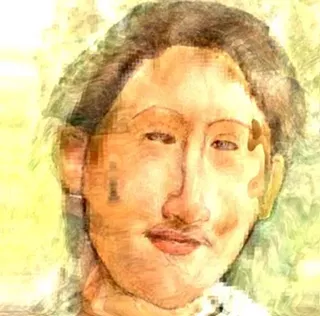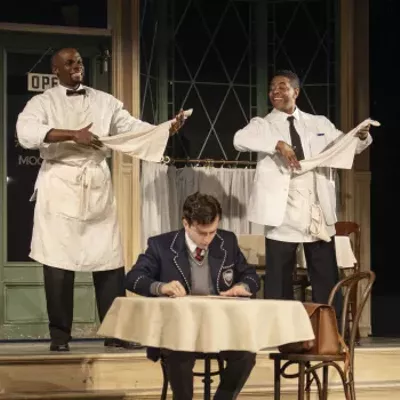If the names of these Spanish Renaissance and Baroque composers don't lie at the tip of your tongue, the instruments O'Dette employs for their music may be equally unfamiliar. He plays the 17th-century music on a Baroque guitar, which has not only a somewhat different shape from its modern counterpart but a totally different system of strings--they're made of gut and silk rather than nylon and wire, and they are strung in five pairs. The resulting sound is quite different from what you hear from modern instruments; it's sort of a twangy successor to the lute, O'Dette's principal instrument. He'll play the earlier pieces on the related but deeper-toned vihuela.
The different instruments will emphasize the dramatic way Spanish music changed between the 16th and 17th centuries, says O'Dette, America's leading lutenist.
"The earlier music is mostly very, very serious, highly placid, beautifully wrought contrapuntal fantasias in the style of the vocal music of the time," he says. "There are some dances in the 16th-century repertoire, but not many; that situation flip-flops in the 17th century, where the dances completely take over the repertoire and the serious, contrapuntal, vocal style of music disappears almost completely."
The music changed because the instruments changed.
"The instrument played most often in Spain in the 16th century was the vihuela, which has the same tuning as the lute but a more guitar-like shape," O'Dette explains. "The tuning of the vihuela lent itself beautifully to this complex, polyphonic style. Then, in the beginning of the 17th century, the five-course guitar took over in Spain. It was easier to play; they had just invented a repertoire of strumming techniques for playing rhythmic variations on dances. It essentially had no bass strings, so it did not lend itself well to contrapuntal music, or music in many parts. It really was a portable instrument that was highly suited to highly rhythmic, percussive repertoire."
O'Dette himself started out some 30 years ago as a highly rhythmic player, at a time when most players of the Renaissance lute and Baroque guitar were still picking their way through the music very carefully and politely. As a teen-ager, O'Dette played electric guitar in a rock band; wanting to develop a better technique, he started taking lessons from a classical-guitar instructor and fell in love with one of his first assignments: transcriptions of Renaissance lute pieces. By the time he was 21, even before he'd earned a bachelor's degree, he was running the Early Music program at the prestigious Eastman School of Music.
That was in 1976, when lute players still had rather vague ideas about how to approach Renaissance music in a manner appropriate to the period. "We had relatively few sources of information," O'Dette recalls. "We were looking through library collections for every scrap of information we could find about interpretation and playing technique and fingering and ornamentation."
A lot more helpful old treatises have turned up since then. "There will always be a lot that we don't know about how music was performed at a given time," O'Dette admits, "but the more pieces of information that come to light, the easier it is to reconstruct the missing parts of the jigsaw puzzle. I think there's also a much greater appreciation now that there was not just one way to play music in these periods, but that there were very distinctive national and regional styles, and even individual styles from one player to the next. It's much too convenient to regard music history in neat little categories and create a whole list of rules of things that were and were not done, as if these people were all reading the same daily newspaper that described how this music was supposed to be played."
O'Dette expresses delight in the wide variety of approaches various Early Music players are taking today--unlike the way orchestras, soloists and chamber ensembles are currently playing 19th- and 20th-century music, a manner O'Dette finds too homogenized and faceless.
He readily admits that he has become a much more flexible musician over the past three decades. "The thing I notice the most in early recordings is that I tended to play in a constantly rhythmic way, not allowing even the fastest passages any time to stretch or relax," he says. "Technically, I could do it, so I was going to channel those notes into a given space of time no matter what. Now I'm starting to be more rhapsodic with the fastest passages, trying to give them more grace and poetry. I'm also looking for more contrast in dynamics and color.
"I really wish that every performer could look at every piece from scratch, instead of immediately adopting the standard interpretation. By going back to the sources and trying to determine, at least as a starting point, what the composer had in mind, it causes one to reevaluate the interpretation of a piece from the ground up. That can only lead to more variety, more experimentation, and more engagement with the listener."







